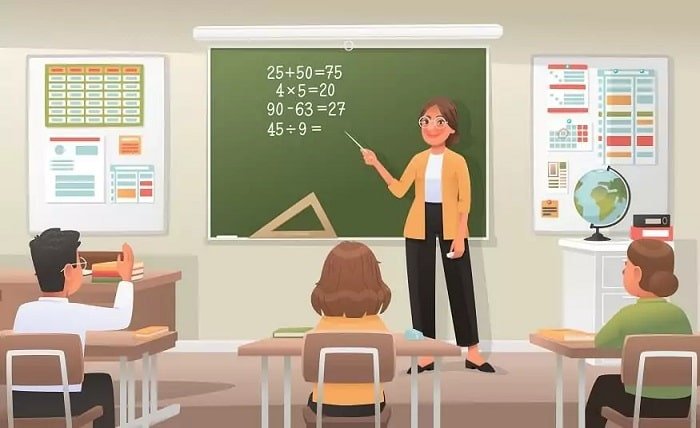Classroom management is a fundamental aspect of teaching that ensures an organized, respectful, and productive learning environment. Without effective classroom management, even the most well-planned lessons can be disrupted. Teachers must establish clear expectations, implement consistent rules, and foster a sense of community to create a space conducive to learning. This guide explores various techniques and best practices to help educators improve their classroom management skills.
Why Classroom Management is Important
Understanding the significance of classroom management is the first step toward becoming an effective educator. Proper classroom management helps reduce disruptions, maximizes instructional time, and promotes a positive atmosphere. A well-managed classroom allows students to feel secure, respected, and motivated to learn. When teachers implement strong classroom management strategies, students exhibit better behavior, engagement, and academic success.
Establishing Clear Rules and Expectations
One of the core elements of classroom management is setting clear rules and expectations from the very beginning. Teachers should define guidelines that encourage respect, responsibility, and active participation. Clearly communicated rules help students understand what is expected of them, reducing the likelihood of behavioral issues. Effective classroom management involves:
- Creating simple and clear rules.
- Involving students in the rule-setting process.
- Reinforcing expectations consistently.
- Displaying rules in a visible place.
When students know what is expected of them, they are more likely to follow the rules, making classroom management easier for teachers.
Effective Behavior Management Strategies
Behavior management is a crucial component of classroom management that involves guiding students toward positive conduct. Teachers can use various techniques to address misbehavior while reinforcing good behavior. Some key strategies for classroom management include:
- Positive reinforcement: Recognizing and rewarding good behavior encourages students to maintain it.
- Consistent consequences: Enforcing fair and logical consequences for rule-breaking fosters accountability.
- Redirecting behavior: Gently guiding students toward appropriate behavior prevents conflicts from escalating.
- Maintaining composure: A calm, authoritative demeanor helps teachers manage classroom disruptions effectively.
By implementing these classroom management strategies, teachers can create a structured and disciplined learning environment.
Building Positive Teacher-Student Relationships
A strong teacher-student relationship is essential for successful classroom management. When students feel valued and respected, they are more likely to engage positively in the classroom. Teachers can foster strong relationships by:
- Showing genuine interest in students’ lives.
- Encouraging open communication.
- Providing constructive feedback.
- Demonstrating empathy and understanding.
Classroom management becomes significantly easier when students feel connected to their teacher. A supportive and trusting relationship fosters cooperation and minimizes behavioral issues.
Utilizing Engaging Teaching Methods
Engagement plays a vital role in classroom management. When students are actively involved in learning, they are less likely to become disruptive. Teachers can enhance engagement through:
- Interactive lessons: Encouraging discussions, group work, and hands-on activities keeps students interested.
- Technology integration: Using educational apps, videos, and digital resources makes lessons more dynamic.
- Differentiated instruction: Tailoring teaching methods to accommodate diverse learning styles ensures all students stay engaged.
- Gamification: Incorporating games and rewards enhances motivation and classroom management.
An engaging classroom environment supports effective classroom management by keeping students focused and enthusiastic about learning.
Classroom Organization for Better Management
A well-organized classroom fosters a sense of structure and efficiency, contributing to better classroom management. Proper organization minimizes distractions, promotes easy access to materials, and enhances student productivity. Teachers can improve classroom management by:
- Arranging desks to maximize visibility and interaction.
- Keeping supplies neatly stored and easily accessible.
- Implementing clear procedures for transitions and activities.
- Using visual aids and labels to create a structured environment.
Effective classroom management relies on a well-organized space that promotes learning and minimizes disruptions.
Handling Disruptions and Conflict Resolution
Even with strong classroom management strategies in place, disruptions and conflicts may arise. Teachers must be equipped with effective methods to handle these situations without escalating tensions. Key classroom management techniques for managing disruptions include:
- Addressing issues promptly and calmly.
- Using non-verbal cues to redirect student attention.
- Applying conflict resolution strategies to mediate disagreements.
- Encouraging peer mediation to promote responsibility and cooperation.
Classroom management is most effective when teachers handle conflicts with patience and professionalism, maintaining a harmonious learning environment.
Conclusion
Classroom management is a critical skill for educators, shaping the learning experience for both teachers and students. By establishing clear rules, using behavior management strategies, fostering positive relationships, and maintaining an organized classroom, teachers can create an environment conducive to success. Engaging teaching methods and effective conflict resolution further enhance classroom management, ensuring that learning remains a top priority.
FAQs
1. What are the key elements of classroom management?
The key elements of classroom management include clear rules and expectations, behavior management strategies, student engagement, classroom organization, and conflict resolution.
2. How can I improve classroom management skills?
Teachers can improve classroom management skills by setting clear expectations, maintaining consistency, building strong relationships, and using engaging teaching methods.
3. Why do students misbehave in class?
Students may misbehave due to a lack of clear rules, boredom, emotional struggles, or seeking attention. Effective classroom management strategies can address and prevent misbehavior.
4. How can technology help with classroom management?
Technology can enhance classroom management by providing interactive learning tools, facilitating communication, and helping teachers track student progress.
5. What should I do if classroom management strategies are not working?
If classroom management strategies are not working, teachers should reassess their approach, seek mentorship, attend professional development sessions, and involve parents or school administrators when necessary.
